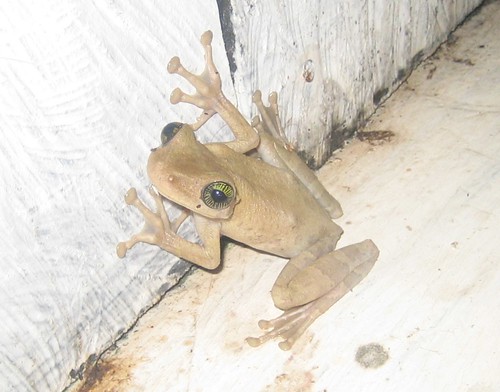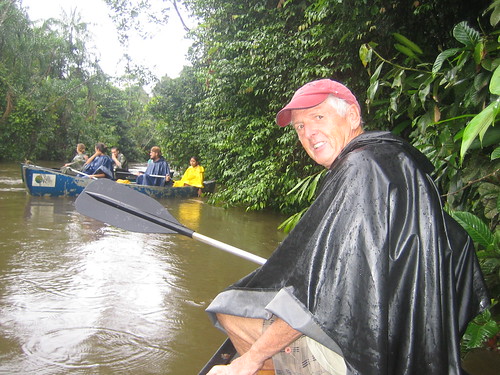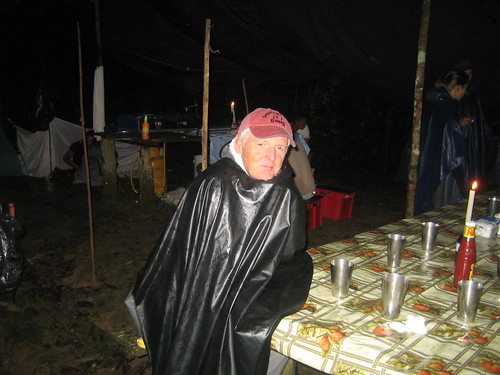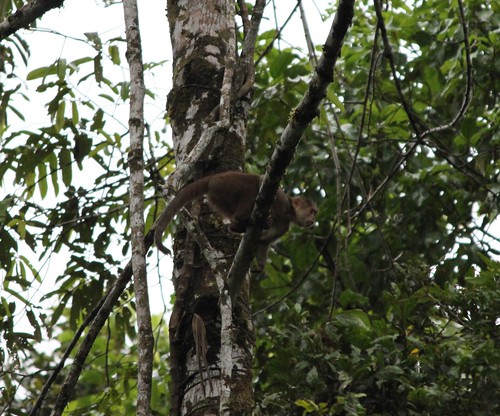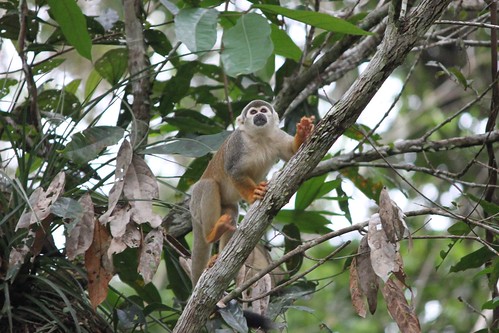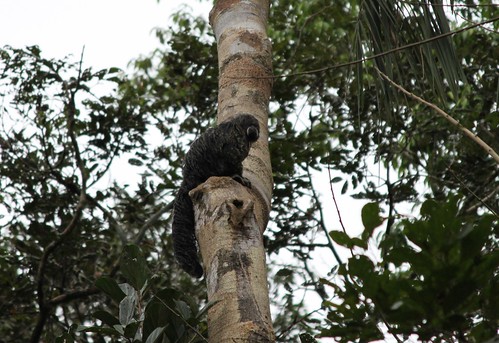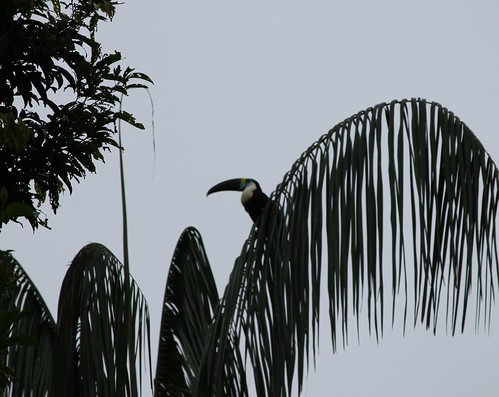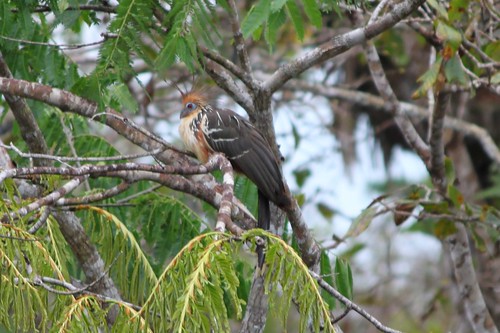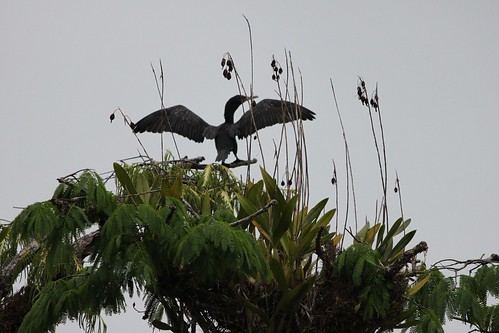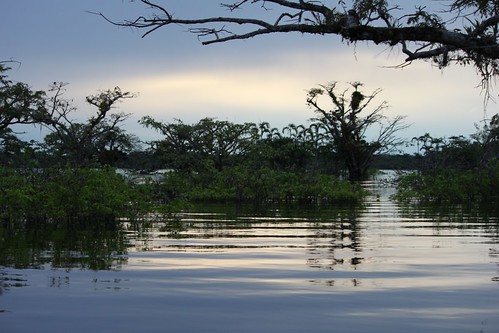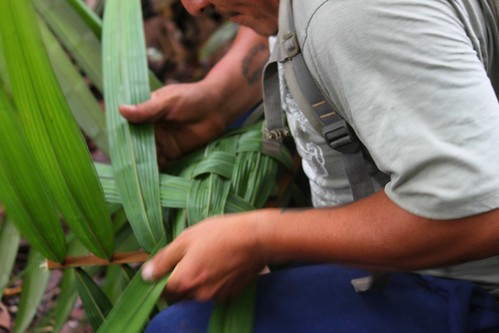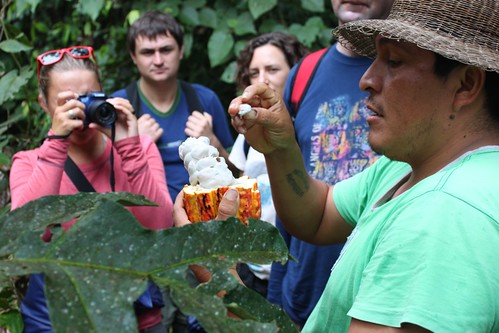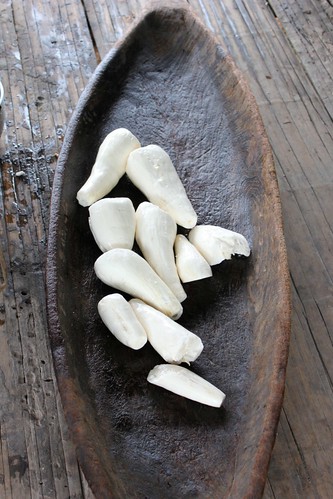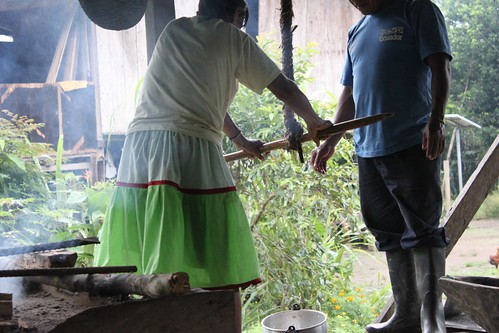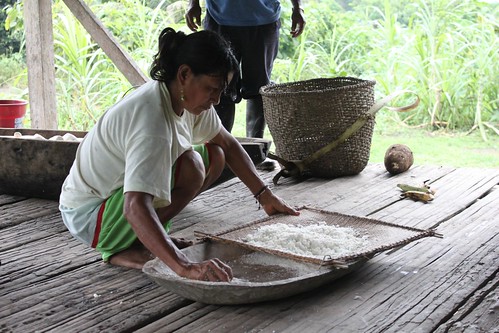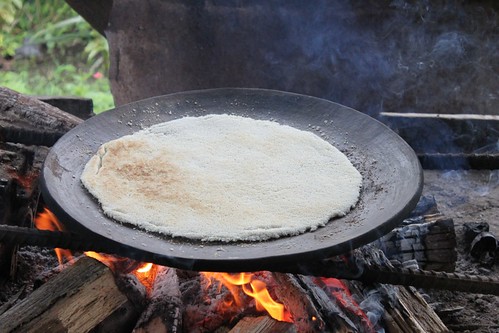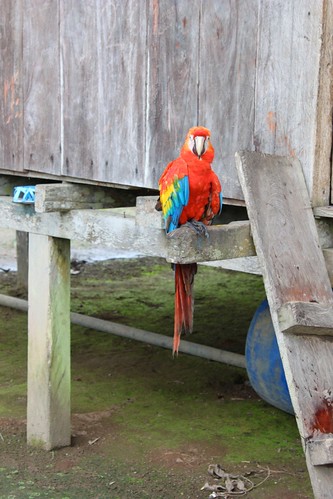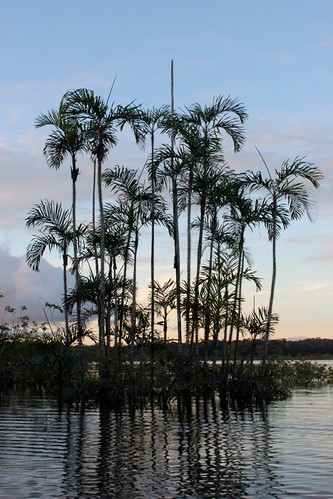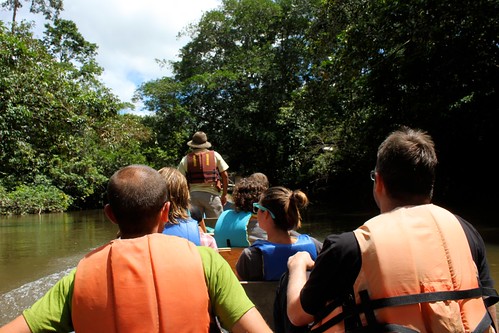You know the jungle isn’t really such a scary place. The majority of piranha fish are vegetarian, an anaconda will only attack if you’re near its nest, and the frog that jumped out of the toilet is completely harmless.
Those are some of the things I learned on our 5 day canoe trip in the Ecuadorian Amazon. Of course, being attacked by large ants on a night hike did raise some alarm, and there might have been a few squeals when a giant cockroach landed on the dinner table.
The Oriente or eastern part of Ecuador covers a third of the country’s area and encompasses the cloudforests of the eastern Andes and the rainforest or jungle whose rivers flow into the Amazon. We visited the Cuyabeno Reserve in the Northern Oriente which meant an 8 hour bus ride to the gateway town of Lago Agrio followed by a 2 hour bus ride to the bridge on the Cuyabeno River where we put in the canoes.
While most tour groups travel by motorized dugout canoe, we booked our trip with Magic River Tours for the opportunity to paddle the river and observe the jungle without the noise of the motor. The great part was that all the paddling was on flat water or downstream and that for the first two days we had a paddler from the community at the back of each boat. When it came time to travel upstream and for some of our evening excursions, we used a motorized dugout!
On the first afternoon, we paddled to the Magic River campsite (Tiger Pass) where the crew had set up our tents and prepared a beautiful candlelight dinner.
After dinner, we walked through the forest using flashlights to see where we were going and to look for eyes in the darkness. Our guide Luis was a pro and showed us a scorpion spider, a tarantula and a kinkajou (a mammal related to raccoons and coatis). It’s quite possible that while we were straining our necks to see the kinkajou, the ants (mentioned above) hitched a ride on our pants.
The next morning, the crew broke camp with lightning speed (with us either pitching in or trying not to get in the way), and we launched the canoes for the morning paddle which I should admit included an hour of just drifting! We saw different species of monkey, including white-fronted capuchins, squirrel or clown-faced monkeys and monk saki monkeys, as well as a morage palm snake and a toucan or two.
When we reached the Laguna Grande, we transferred into the motor boat for the rest of the trip to the Magic River Lodge where lunch awaited us. There we settled into our rustic cabins (unsettling an insect or two) and had time for a swim in the river before heading back to the lagoon (and our canoes) in search of wildlife. There was more monkey activity and a few bird sightings, including an anhinga (snakebird), a huatzin (stinky bird) and a cormorant.
We also saw a couple of pink river dolphins (my reason for wanting to visit Cuyabeno) but I have no photos because they were far away and far too quick. We visited the home of an anaconda but she was sleeping so instead we watched the sun set over the lagoon.
The next day Luis took us on a three hour hike through the forest and shared some of his jungle secrets. He showed us the magic leaf for writing messages, the twigs that substitute as cigarettes, and how to make a basket from a palm frond. Unfortunately, I wouldn’t be able to identify any of these plants again and would probably end up eating the pretty blue berries that are poisonous.
In the afternoon in the pouring rain, we went piranha fishing with wooden poles baited with raw beef. There were a few lucky people in our group who caught piranha but Roger and I wouldn’t last in the jungle; he caught a 3 inch minnow, and I caught nothing!
The fourth day of our trip was my birthday. Last year I spent it at a villa in Crete. This year I spent the day in a small village (Tarapua) of the Siona people learning how they make yucca bread, the main staple in their diet.
We canoed downriver and then walked the path that the school kids use to get to the village. En route Luis revealed a few more jungle secrets, and we tasted the flesh around the seeds of the cacao plant. Yum!
Upon arriving at the village, we met Maria who showed us how to dig the root of the yucca (or manioc) with a machete and then replant parts of the stalk for new yucca to grow. Next we peeled the yucca and cleaned the tubers.
Roger participated in grinding the yucca using a homemade grater (made from a piece of aluminum punched with nails). Maria then squeezed out the liquid using a device made from a plant. Finally the yucca was put through a sieve. The amount of water that is removed is crucial because nothing else is added to the flour to make the bread.
The yucca bread was cooked in a clay pan on an open fire and tasted delicious plain and with jam. All of the activity took place in an open air kitchen owned by Hilda, one of our paddlers from the first two days.
After purchasing a couple of bracelets from the local kids, we walked to our awaiting motorboat, stopping en route to see a scarlet macaw up close (someone’s pet). Later that day we were fortunate to see one fly overhead!
When we passed the spot where we had left the canoes, we stopped and tied them to the back of the boat in a canoe train. After a brief rest at the lodge, we took the motorboat to the laguna to swim and see the sunset.
That night at dinner, there was a surprise! Roger had arranged a cake, which caused the chef some grief in finding the ingredients and having to cook it stove-top but the result was a lovely raisin cake (kind of like a bread pudding).
On our last day, we were up at 4:30 to motor to the Laguna Grande and transfer into the canoes to watch the sunrise and see the freshwater dolphins one more time. Then we breakfasted, packed up and motored for two hours back to the bridge from whence we came.
What a trip! Our guide Luis was outstanding, sharing his knowledge and enthusiasm for the jungle (having grown up in the Napo region), and the rest of the crew (Raoul the chef, Jesse the boat captain, and John Hayden the assistant) made our trip comfortable and safe.
For more jungle photos, see: http://www.flickr.com/photos/sataylor/sets/72157626753973265/
